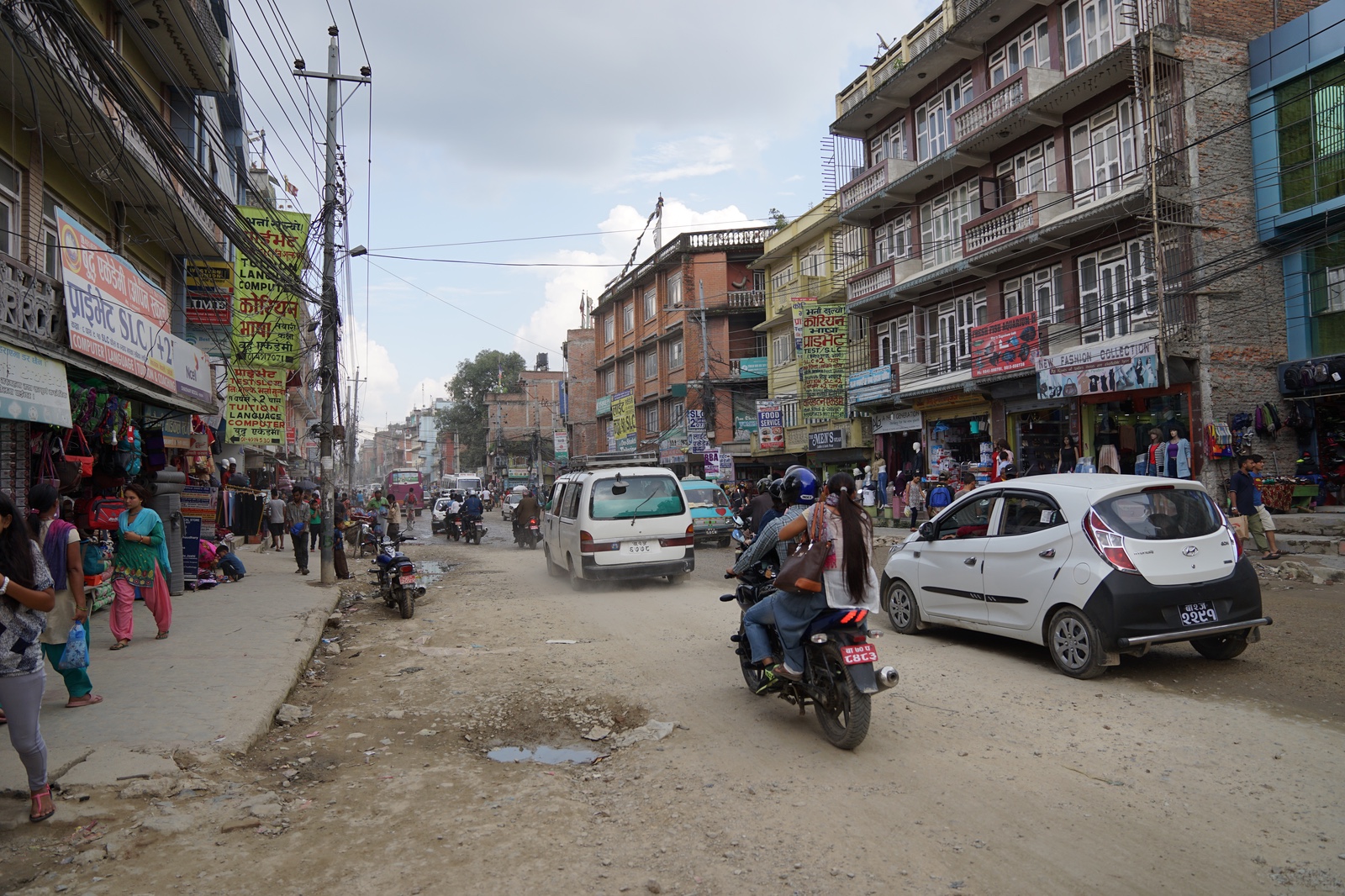Kathmandu: Temples, tikas, and crazy traffic
6th to 7th October 2016
In Nepal, we hit the ground running... Our first full day in Nepal was spent touring the temples in the historic Kathmandu Valley. It was a fantastic way to be introduced to this spiritual and colourful country.
We've booked our whole trip in Nepal with Good Karma Trekking. I can definitely recommend this approach for anyone visiting Nepal for the first time. Raj and his team have been fantastic from the very beginning. They have organised pretty much everything from airport transfers, to accommodation, to trekking. They also organised our tour of Kathmandu Valley.
Our guide, Komoda and driver, Depak collected us early Friday morning and we plunged into rush hour morning traffic in Kathmandu.
Traffic here is totally different from Dublin rush hour - the only rule is that there are no rules! Cars and copious amounts of scooters weave in and out crossing each other, beeping all the time. The funny thing is... it works! I wouldn't recommend driving in Kathmandu to anyone just visiting, but the people who live here have it down to a fine art.
Swayambhunath (The Monkey Temple)
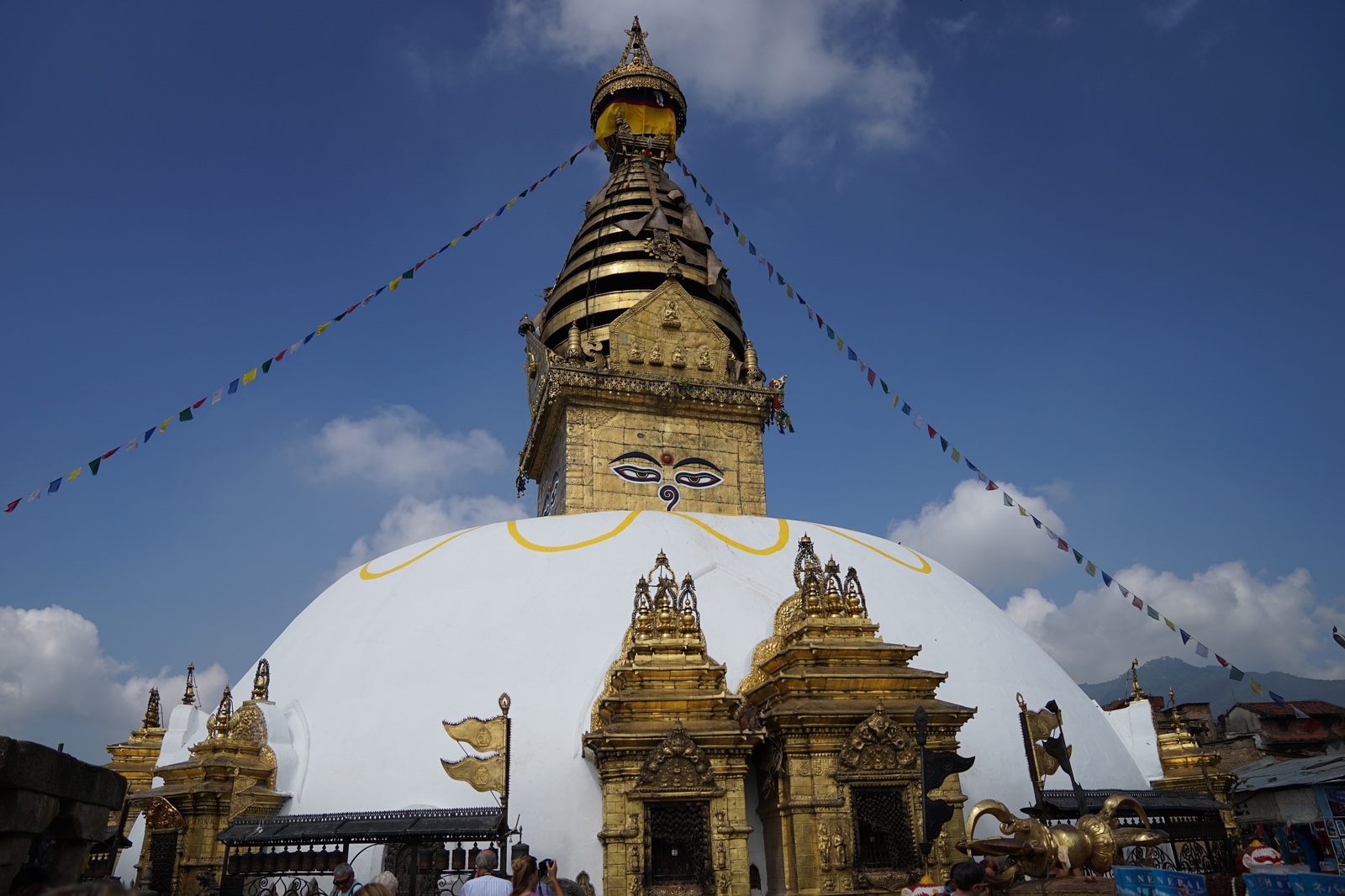
Our first stop was Swayambhunath, often called the Monkey Temple by tourists. There are so many monkey families cruising around the grounds of this temple, all having a great time! This is a Buddhist stupa and temple. The hill is covered in trees, with colourful prayer flags criss-crossing from trees to statues.
While exploring Swayambhunath, we visited a traditional painting school and learned how they craft intricate mandala paintings. It can take weeks or months for students to complete 1 painting, and a master can work on 1 piece for years. The result is vibrant and detailed, with luscious gold work (only used by masters). Of course, we couldn't help but buy a small painting before we left...
I love the way Buddhism is such a tactile and inclusive religion. People put colourful powder on statues as they make their prayers, turn prayer wheels inscribed with mantras, and receive tikas (colourful dabs on foreheads) when they receive a blessing. We were encouraged to join in and received tikas as we visited temples.
A Tika from a Kumari
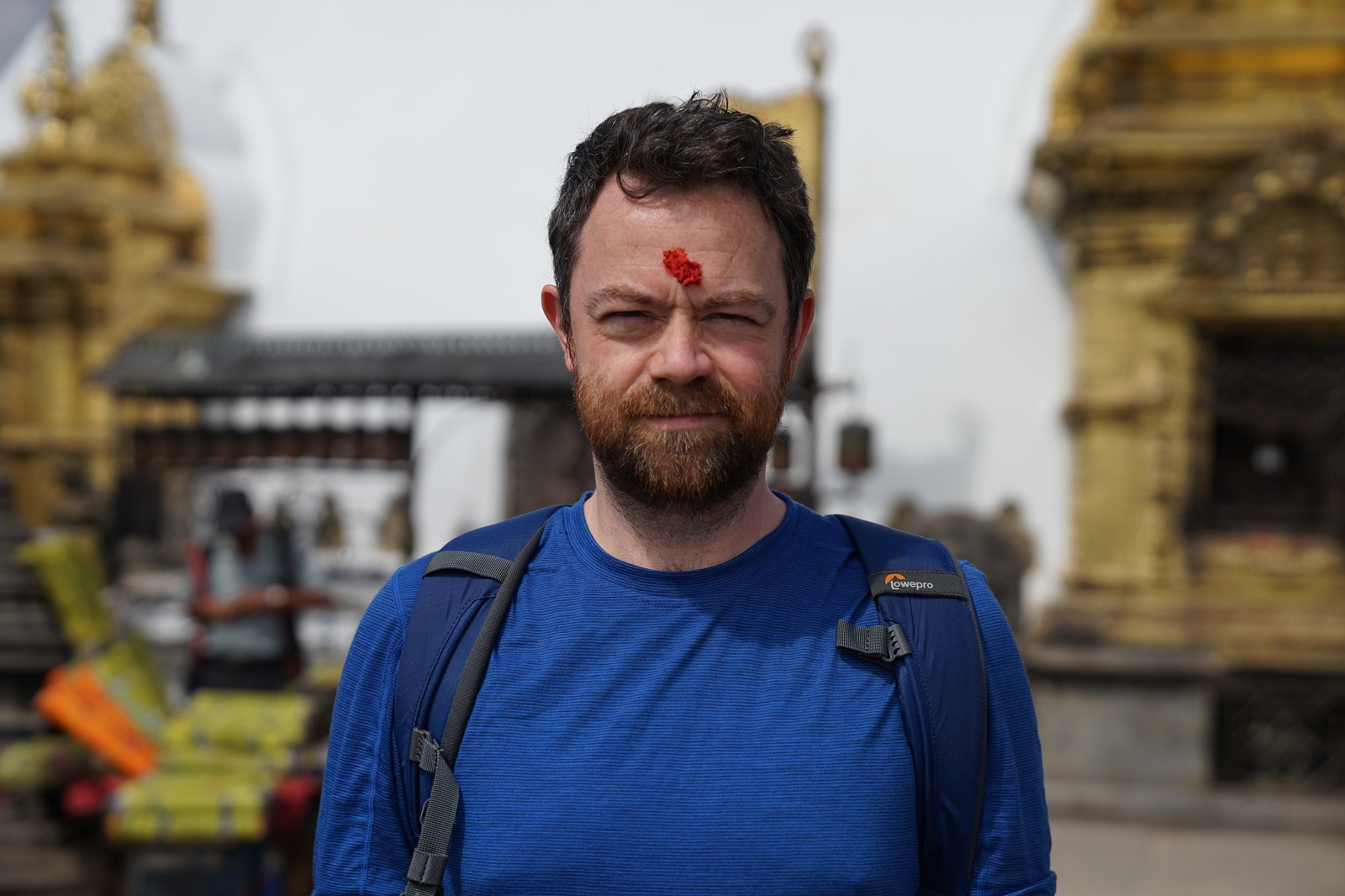
After we left Swayambhunath, we headed towards Patan, one of the 3 cities that make up Kathmandu Valley (the others being Kathmandu and Bhaktapur). We stopped at the house of the Patan Kumari. Kumari is a "living child goddess". There are several throughout Nepal, and because Komoda knew her parents, we could receive a blessing (tika) from the Patan Kumari.
Patan in Recovery
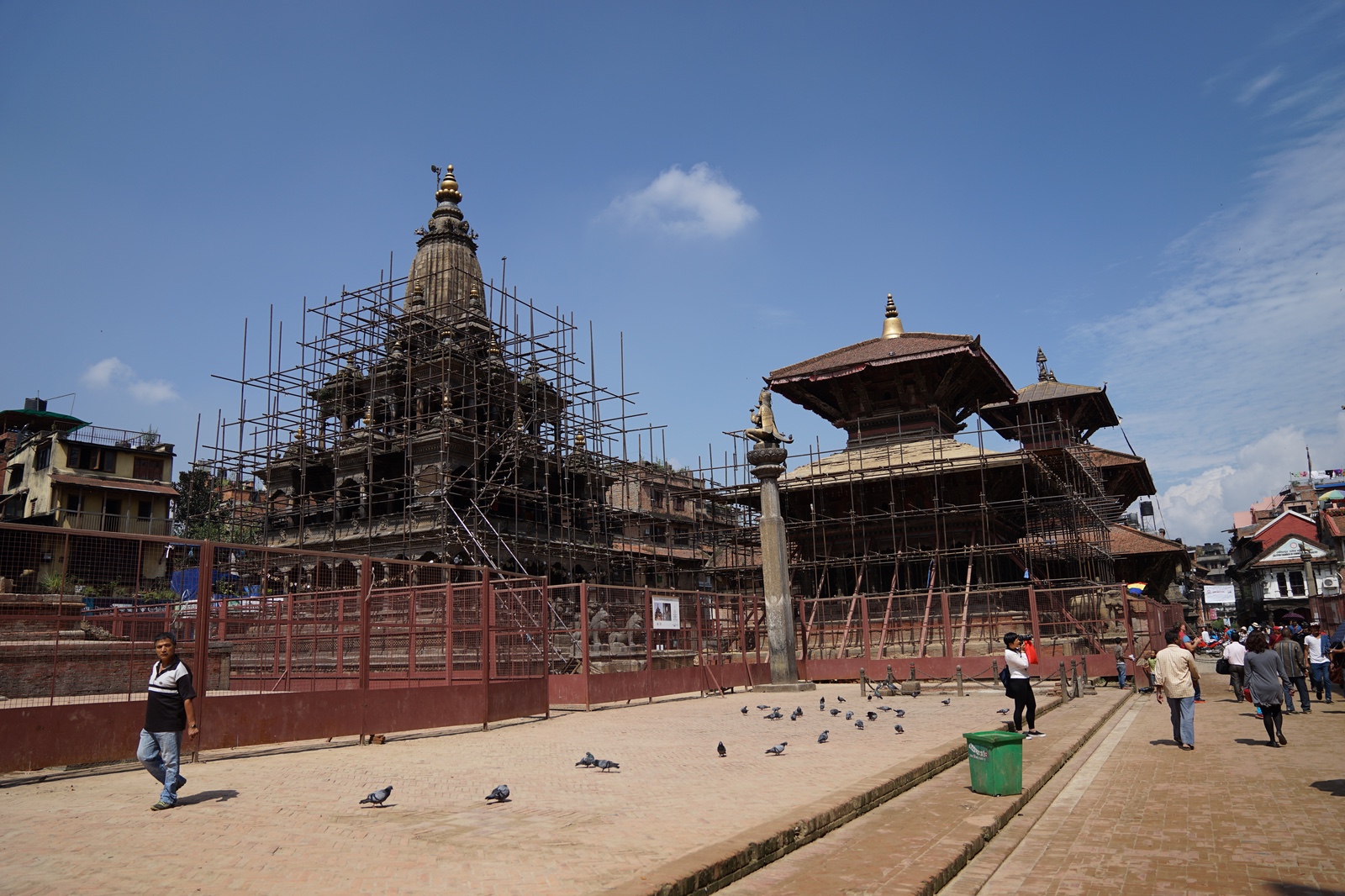
We continued to Patan Durbar Square, home to over 55 Hindu and Buddhist temples. It's also home to the former palace of the royal family, and many other magnificent courtyards and historic buildings.
I think, of all the places we visited on our first day, Durbar Square shows the most evidence of damage, and of recovery from the earthquake that hit Nepal in 2015.
Many precious temples and historical artefacts were badly affected by the earthquake, but you can see how quickly renovation has begun to take effect. The damage hasn't taken away the historical impact of this UNESCO World Heritage Site. In fact, witnessing the damage caused by and recovery from the earthquake is experiencing a part of Nepal's history as much as when you visit the temples.
One Million Mantras
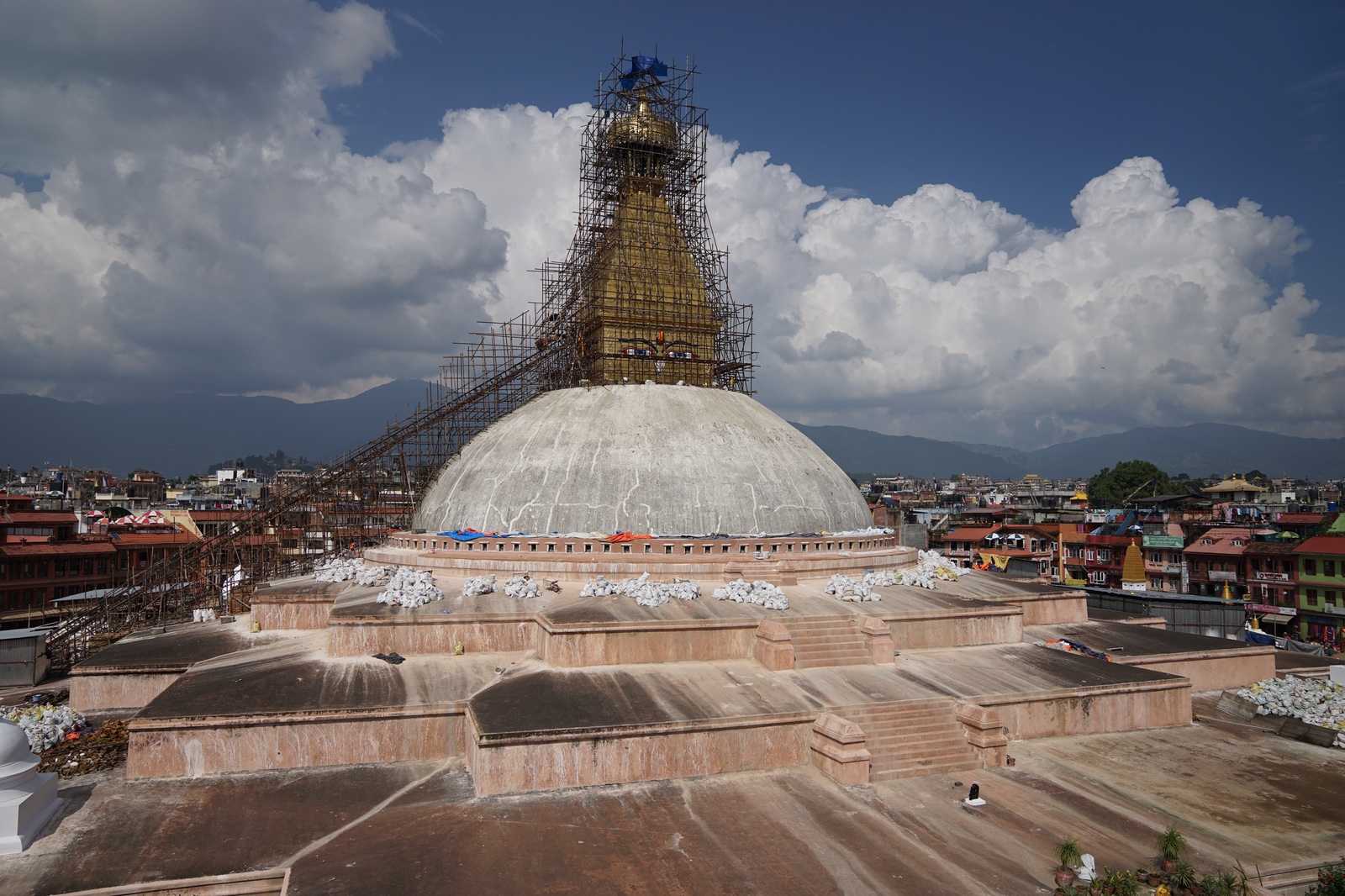
Our next stop was the Boudhanath Stupa, one of the most famous images of Kathmandu.
If you've ever wondered about the eyes and squiggly nose found on some Buddhist temples and stupas, including this one, these are the eyes of Buddha watching over everything. The 'squiggly nose' is actually the number 1 in Devanagari script, symbolising that we are all one.
This famous stupa is undergoing extensive renovation following the 2015 earthquake.
You'll also find a huge prayer wheel (my new favourite thing!) in one of the monasteries surrounding the stupa. This prayer wheel is filled with a mantra written 1 million times. The logic is that if you turn it once, you remember the mantra 1 million times (Komoda recommended we turn it 3 times, just to be on the safe side).
Pashupatinath Complex

The last stop on our tour was Pashupatinath Temple, a world-famous Hindu temple devoted to Shiva. When I remember the Pashupatinath complex, I will remember smoke, the river, and the goats.
We could not enter the temple, as it is closed to non-Hindus during the festival of Dashain, which is currently in full swing here in Nepal.
We were able to walk around the grounds, filled with more dogs and monkeys, and sacred goats given as tribute to Krishna. We walked to the River Bagmati behind the temple. Here, you see the cremation pyres along the river. There were a several cremations underway while we visited, which filled the air with scented smoke. The smoke and grey clouds, which descended when we arrived, and lifted as soon as we left Pashupatinath complex, added to my feeling of this being a sacred place we could observe, but not truly understand.
So to sum up, after an action-packed first few hours in Nepal, we are already really enthralled with this country. This is just a snippet of our first day, with more to come soon.
